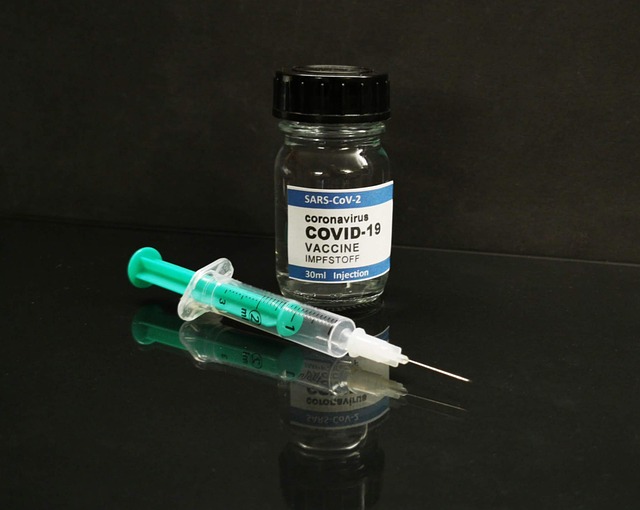Semaglutide, a versatile GLP-1 receptor agonist, offers dual benefits in treating type 2 diabetes and aiding weight loss. Optimal dosing varies based on patient factors like age, kidney function, and liver health. Healthcare providers closely monitor blood sugar levels and side effects to adjust dosages from initial guidelines (0.25 mg – 2.4 mg weekly) for personalized treatment, balancing efficacy and safety. Regular monitoring is crucial to manage potential adverse reactions, especially gastrointestinal issues and rare cardiac or kidney complications.
“Discovering the optimal semaglutide dosage is a nuanced process, crucial for its therapeutic effectiveness. This article explores the factors shaping semaglutide dosing, offering insights into understanding this medication’s diverse uses. We’ll navigate through key considerations, including patient-specific needs, to determine the maximum allowed dosage safely. Learn about common dosing regimes and the importance of monitoring side effects. By delving into these aspects, we aim to empower healthcare professionals in optimizing semaglutide treatment plans.”
Understanding Semaglutide and Its Therapeutic Uses

Semaglutide is a medication that has gained significant attention in recent years due to its versatile therapeutic applications. It belongs to a class of drugs known as glucagon-like peptide-1 (GLP-1) receptor agonists, which mimic the effects of a natural hormone in the body. This hormone plays a crucial role in regulating blood sugar levels and promoting weight management. The primary use of semaglutide is in the treatment of type 2 diabetes, where it assists in improving glycemic control. By stimulating insulin secretion and suppressing glucagon release, semaglutide helps lower blood sugar levels while also reducing the risk of hypoglycemia.
In addition to its diabetes management role, semaglutide has shown promise in weight-loss therapies. Clinical studies have demonstrated its effectiveness in aiding overweight or obese individuals by increasing feelings of fullness and reducing appetite. This dual action makes semaglutide a game-changer in managing both metabolic conditions and promoting healthy weight loss. Understanding the specific semaglutide dosing is essential for maximizing its therapeutic benefits while minimizing potential side effects, ensuring patients receive the optimal treatment for their unique health needs.
Factors Influencing Semaglutide Dosing

The maximum allowed dosage of semaglutide, a medication used for type 2 diabetes and weight management, is influenced by several factors. These include the patient’s age, kidney function, liver health, and any other medications they might be taking. For instance, older adults may require lower dosages due to potential changes in drug metabolism, while those with kidney or liver issues may need adjustments based on their specific condition.
Additionally, semaglutide dosing takes into account the patient’s response to treatment. Starting doses are typically lower and can be gradually increased over time as needed. It’s crucial for healthcare providers to regularly monitor patients’ blood sugar levels and overall health status during treatment with semaglutide, ensuring that the dosage remains optimal and safe.
Determining Maximum Allowed Dosage

The maximum allowed dosage of semaglutide is determined through a careful balance between efficacy and safety. Healthcare professionals consider individual patient factors, such as age, weight, medical history, and current health status. Semaglutide dosing is personalized based on these parameters to achieve optimal blood glucose control while minimizing adverse effects.
Several studies have been conducted to establish safe and effective semaglutide dosing regimens. These trials have helped in defining the starting dose, adjustment guidelines, and maximum dosage limits. Dosing strategies may vary depending on whether semaglutide is used as monotherapy or in combination with other diabetes medications. Regular monitoring of blood glucose levels and patient response is crucial to make informed decisions regarding semaglutide dosing adjustments.
Common Dosing Regimes for Semaglutide

Semaglutide, a glucagon-like peptide-1 (GLP-1) receptor agonist, is commonly prescribed for weight management and type 2 diabetes. The medication is available in various formulations, each with its own recommended dosing regimes. For weight management, semaglutide is typically administered subcutaneously once weekly at a starting dose of 0.25 mg or 0.5 mg, depending on the patient’s needs and medical history. This dosage can be increased gradually to a maximum of 1.0 mg per week if significant weight loss is not achieved.
In the treatment of type 2 diabetes, semaglutide dosing may vary based on individual response and glycemic control goals. A common approach starts with 0.5 mg or 1.0 mg once weekly, which can be adjusted up to a maximum dose of 2.4 mg per week. Regular monitoring of blood sugar levels is crucial during the titration period to ensure optimal dosing and minimize adverse effects associated with semaglutide.
Potential Side Effects and Monitoring

The maximum allowed dosage of semaglutide, a popular medication for type 2 diabetes and weight management, should always be determined by a healthcare professional. While generally well-tolerated, excessive semaglutide dosing can lead to potential side effects, some of which may be severe. Common adverse reactions include nausea, vomiting, diarrhea, and abdominal pain. These gastrointestinal symptoms are often most pronounced when starting the medication or adjusting the dose. More serious but less common side effects can involve the heart and kidneys, hence regular monitoring is crucial. Healthcare providers typically assess patients’ response to semaglutide through periodic blood tests and clinical evaluations, adjusting the dosage as necessary to optimize benefits while minimizing risks.
Patient-Specific Considerations for Optimal Dosing

When determining the maximum allowed dosage of semaglutide, several patient-specific considerations come into play to ensure optimal dosing. Factors such as age, weight, medical history, and current medication regimen must be carefully evaluated. Elderly patients or those with kidney or liver disease may require lower doses due to potential changes in drug metabolism and excretion. Additionally, individuals with a history of gastrointestinal issues could experience adverse effects at higher dosages, necessitating adjustments.
Personalized medicine approaches are crucial for optimal semaglutide dosing. Healthcare providers should regularly monitor patients’ responses, assessing blood glucose levels, weight changes, and any side effects. These insights enable practitioners to fine-tune the dosage, ensuring it aligns with individual patient needs while minimizing risks and maximizing benefits associated with semaglutide therapy.
